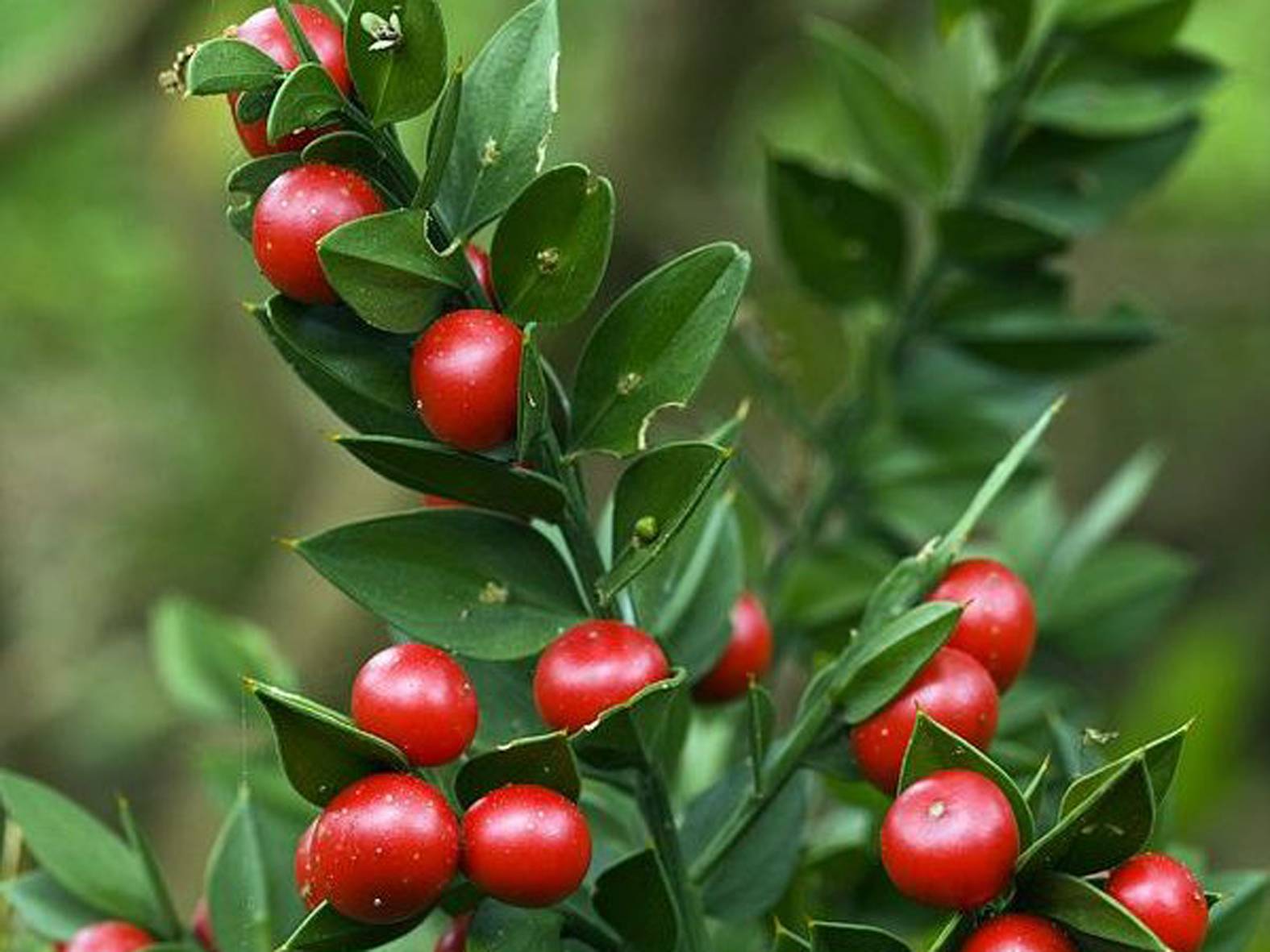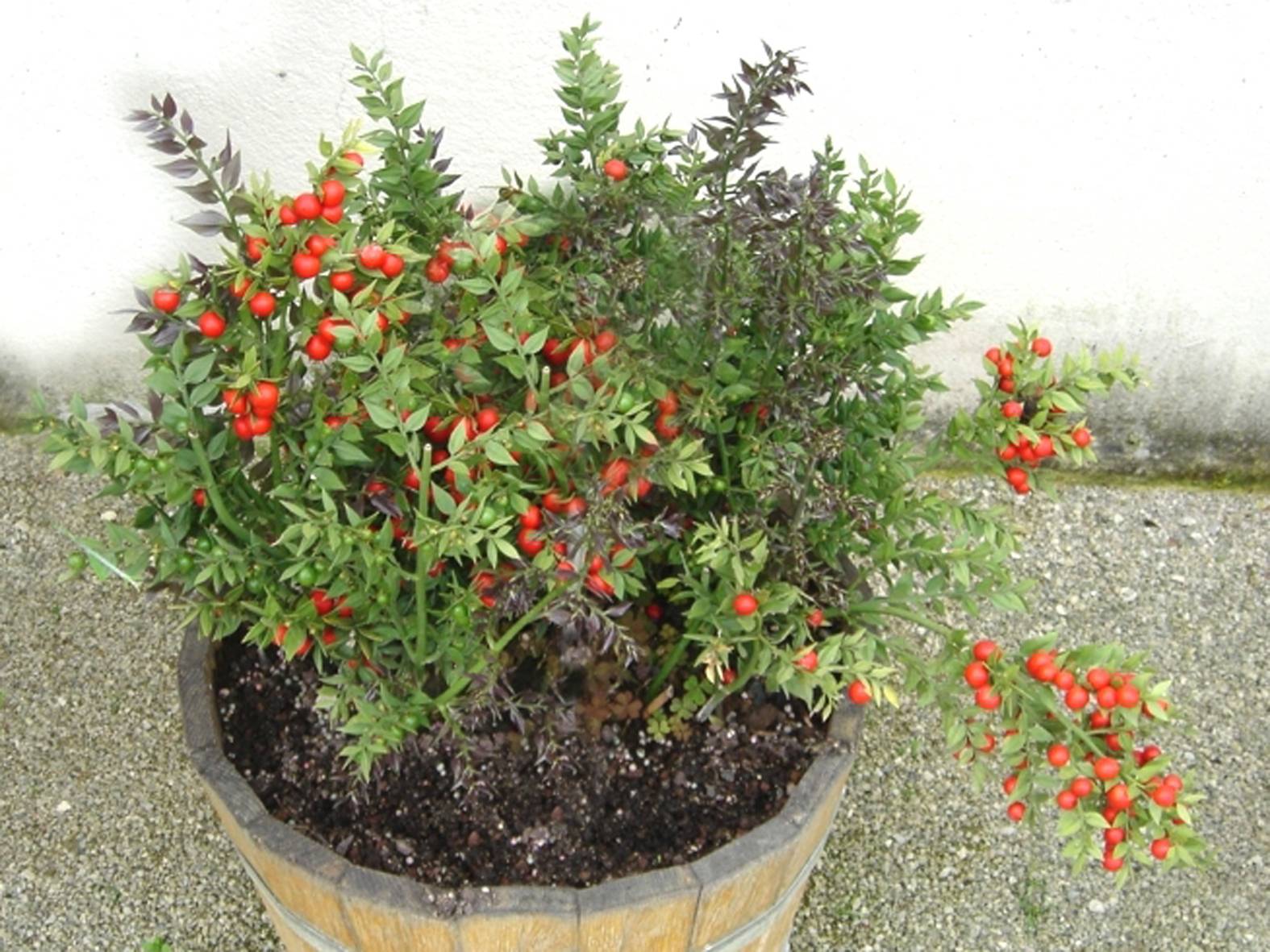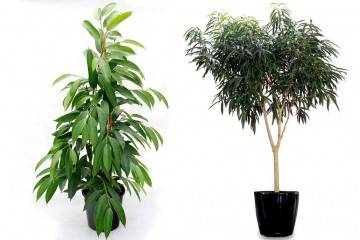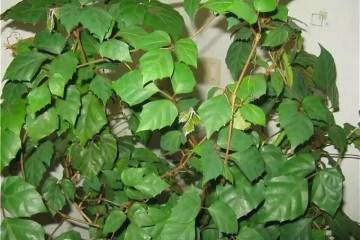Italian Ruscus - home care
Content:
Among the variety of indoor plants, you can find truly exotic and unusual specimens. It is to such plants that Italian Ruscus can be attributed, or in another way, butcher's. This small shrub has an original form of shoots and leaves and no less unusual flowers and fruits. Before deciding to start such an original plant at home, it will not hurt to learn more about the shrub itself and the features of caring for it in an apartment.
Italian Ruscus: description and characteristics
The characteristic of the Ruscus flower is very interesting. The plant belongs to the asparagus family, but some sources distinguish a separate family of butcher's. Its homeland is the Caucasus, the Mediterranean and the Crimean peninsula. Some species in nature can be quite impressive in size.
The structure of this plant has two features.
- In fact, phylloclades are what at first glance can be mistaken for leaves. Ruscus has leaves that are almost invisible and completely undeveloped leaves.
- Ruscus shoots also have a different scientific name. They are transformed and are called cladonias.
So, on the cladonias that come from the root, dense leathery phylloclades of a dark green color are staggered.
During the flowering period, small white or purple star-shaped flowers appear directly on them. After the end of flowering, at this place, medium-sized fruits of bright red color, which have the shape of a ball, are tied.
Common varieties
Butchery has many varieties. They differ in the shape and height of the shrub, as well as in the color and appearance of phylloclades and fruits.
Buttock sublingual (Ruscus hypoglossum)
This variety is very common in the forests of the southern part of the Crimean Peninsula, as well as in the Mediterranean and the Balkans. Another name for the plant is Israeli Ruscus. The height of the shrub does not exceed 40-50 cm. Phylloclades have a rich green color, and the flowers are white with a greenish tint. The berries are round, bright red.
Butcher pontic (Ruskus ponticus)
This species can be found on the rocky slopes of the Crimea and in the forests of the Mediterranean. We can say that it is one of the most common species in the wild. The average height of the shrub is 70 cm. A feature of this type of ruskus is the flowers - they have a delicate purple hue.
Butcher's leaf (Ruscus hypophyllum)
Outwardly, this variety can be easily confused with the Pontic Butcher, but it has its own characteristic features. The color of phylloclades has a lighter shade, and flowers and fruits are tied exclusively on their lower part. Another name for the plant is Italian Ruscus. It is he who can be grown in a pot at home and used to create flower arrangements.
Care in an apartment
Ruscus (butcher) is not very popular with flower growers, but in vain.It is difficult to find a more unpretentious plant that can decorate the farthest corner of the apartment.
Before deciding to grow this plant at home, you should consider certain features of flower care:
| Temperature regime | Feels great at normal room temperature, the optimal indicator during the period of active growth is 18-19 degrees. To provide the flower with comfort during the dormant period, the temperature is lowered to 13-14 degrees. |
| Lighting | It is difficult to find a more unassuming houseplant in relation to lighting requirements. Butchery can grow and bloom even with minimal lighting; it does not need artificial light. The only thing that the flower does not tolerate is direct sunlight. |
| Watering | Butchery prefers moderate watering. Drought is better tolerated by a flower than waterlogging. It is better to water often and not abundantly. For irrigation, it is better to use settled water at room temperature. |
| Spraying, humidity | This plant is very pleased with its requirements for air humidity. Butchery grows well, blooms and bears fruit even with a strong dry air and does not need spraying. It is enough only to periodically wipe the surface of the flower from dust. |
| Priming | The unpretentiousness of the Ruskus also applies to the soil. For planting a flower, you can use the usual ready-made indoor plant mixture. |
| Top dressing | Fertilizers should be applied only during the period of activity. As a top dressing, an ordinary complex fertilizer for indoor flowers is suitable, which must be applied at a frequency of 1 time per month. |
As you can see from the table, exotic Ruscus does not require special conditions and care measures.
It is able to grow not only a master of floriculture, even beginners can keep this houseplant at home.
Features of winter care
Butcher's broom, like many other indoor plants, has a definite development cycle. The active period is from spring to autumn, and in winter the flower is at rest.
In the winter period of rest, there are certain requirements for care:
- lowering the average temperature to 13-14 degrees;
- refusal to apply fertilizers;
- reduction of manipulations with the plant (change of location, transplant, pruning) to a minimum.
Pruning
This agrotechnical technique is optional for butcher's broom. It is carried out only if there is a need to remove dried parts of the bush or to maintain a certain shape.
Sanitary pruning, as a rule, is combined with shaping. This process involves:
- removal of damaged or dried shoots;
- shortening those that are knocked out of the outlines of the form;
- thinning the bush if necessary.
When and how it blooms
In early spring, the Italian ruxus enters a phase of active growth and blooms. Its small flowers can be white or purple or greenish, depending on the variety. As for the aroma, they cannot smell.
The flowering of this plant is not admirable, but fruiting is the opposite. Round fruits with a diameter of about 2 cm appear on the lower or upper part of the phylloclades. They have a bright red color and a glossy surface. Ruscus is especially attractive at this time. The greenery seems to be decorated with small bright beads.
Reproduction
At home, you can grow butcher's broom from seeds or get a new copy by dividing an adult plant.
Growing from seeds
This method is used quite rarely, since it is not only very laborious, but also time-consuming. It can take more than 10 months from germination to picking.
Before planting, the seeds are soaked in warm water and then peeled from the wax shell. Sowing is carried out in a loose substrate and covered with glass or film. The temperature in such a greenhouse should be 18-20 degrees, the humidity is average. When the height of young plants exceeds 7 cm, they are seated in separate containers.
Dividing the bush
Butchery can easily multiply by dividing the bush. Rooting takes a lot of time, but the survival rate of such a seedling is much higher than that of plants obtained from seeds.
Part of the roots with 3-4 shoots is separated from the adult plant. After removing dried and damaged fragments of the root system, they are seated in separate containers.
Cuttings
Very often florists use ruscus to decorate bouquets. The question of how to propagate this plant with a branch from a bouquet probably came to minds of more than one florist.
In fact, it is possible and quite simple. Cuttings 10-12 cm long are cut from a twig, treated with a growth stimulator solution and planted in a loose and moist substrate. A shelter is installed on top. When new shoots begin to appear, the shelter is gradually removed.
Transfer
As the Ruscus grows, it must be transplanted into a new container with a complete soil replacement. It is better to carry out this procedure in spring or autumn after the end of fruiting.
There are three basic requirements that must be adhered to:
- The pot should be chosen with an emphasis on a larger radius, not volume.
- The ground can be used ready-made for indoor flowers.
- A good drainage layer of gravel or expanded clay is required.
Otherwise, the transplant procedure does not differ from that which is standard for all indoor plants.
Diseases and pests
The advantage of Ruscus is its resistance to disease. This shrub practically does not get sick and is very rarely attacked by pests.
Ruxus italiana is an attractive houseplant that few grow. Such unpopularity of this plant is not at all deserved. Due to its unpretentiousness and ability to grow even in the most unsuitable places for other flowers, it can decorate any corner of the apartment.





















